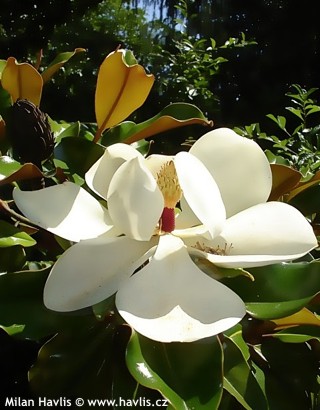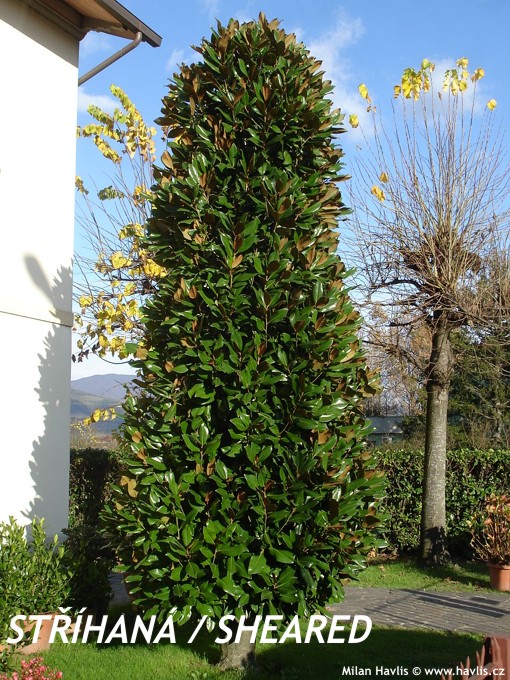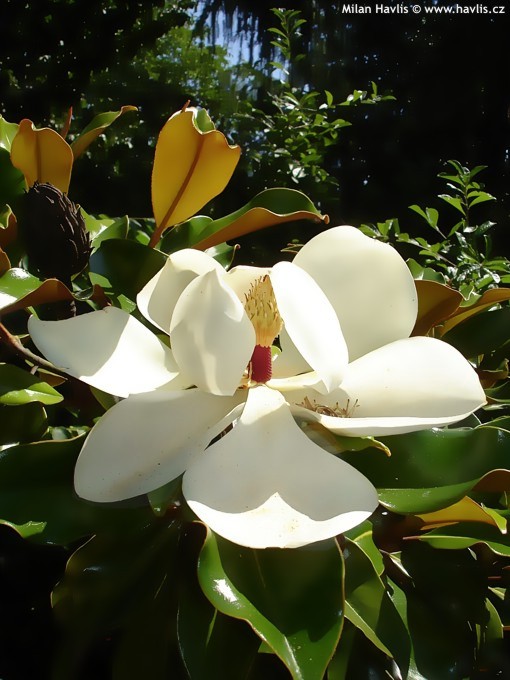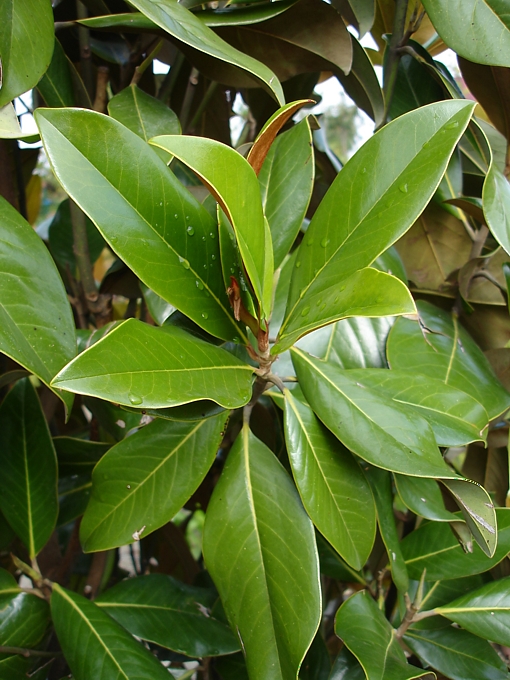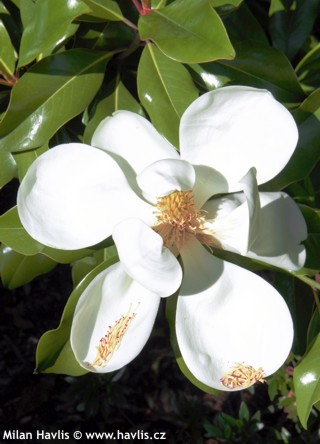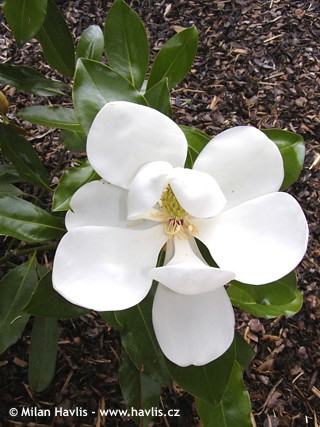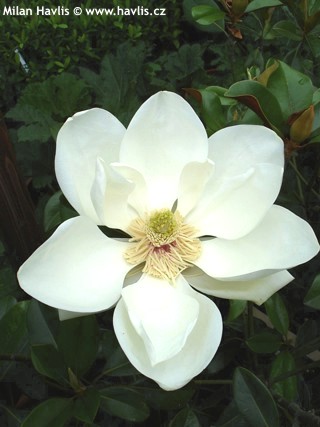Magnolia grandiflora (Gallisoniensis) 'GALISSONNIÉRE' southern magnolia, bull bay


Magnolia
Evergreen magnolias are the queens of flowering trees. We choose the most beautiful and at the same time hardiest varieties.
This variety received its name after a French governor in Canada in 18 century, and has been in cultivation in France for more than 150 years. It is very popular in Britain, too, where it is considered fully hardy. And Italy, namely Tuscany, would most definitely lose its most spectacular symbol without it. It blooms beautifully with large, 20 cm or more across, creamy white to pure white flowers in June and July while it has flower buds. It can be pruned just as you like, it will always re-sprout. With wood hardiness down to -20°C it is suitable in closed yards and town gardens in our climate, if temperatures drop below -17°C it may suffer from winter sunscorch.
Find it a location with plenty of direct sunlight in summer, protected from cutting winds. If you can find such spot, grow it in winter shade. It needs slightly acidic soil, very rich in humus, moist but permeable. In bad winters we recommend covering it with white woven on the coldest days of winter FOR MAXIMUM 2 WEEKS, and in periods of strong sunlight and/or cutting wind in combination with temperatures below zero (especially in early spring). In winter provide extra watering in frost-free periods.
Last update 13-04-2010

































